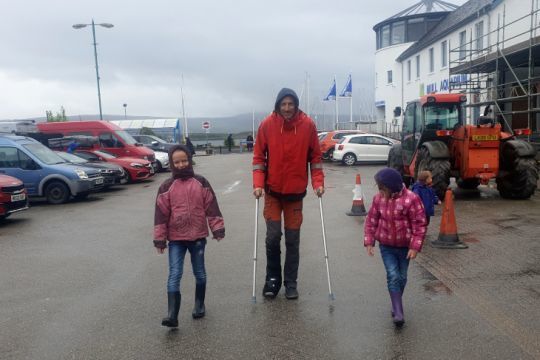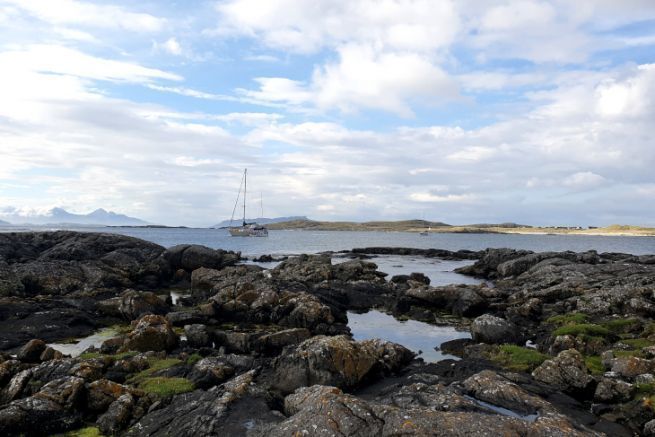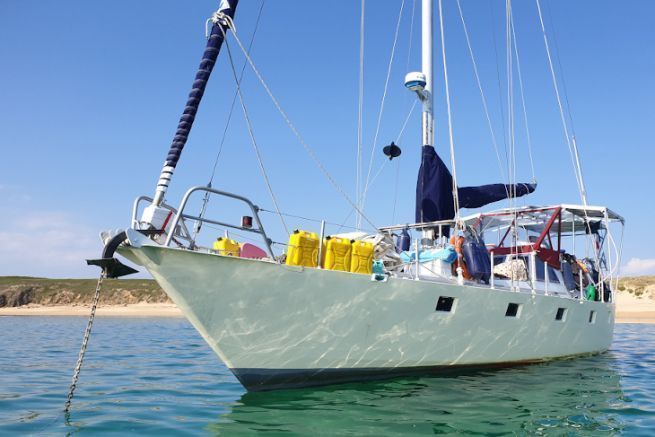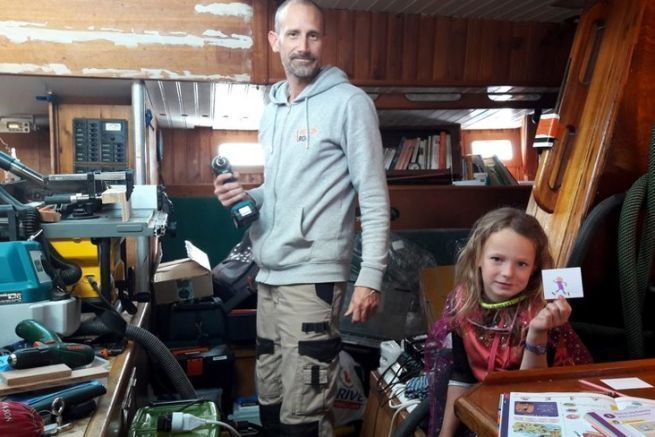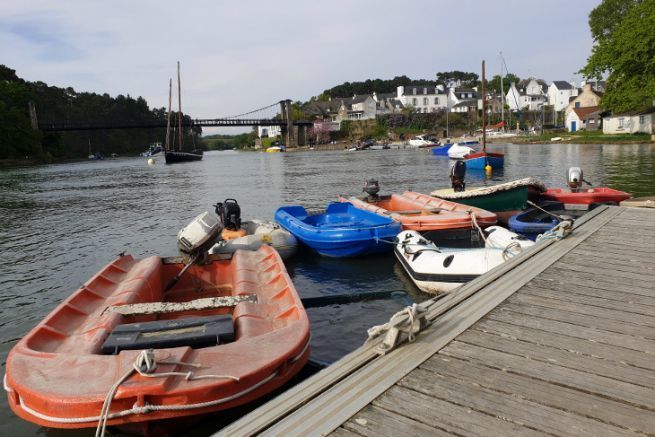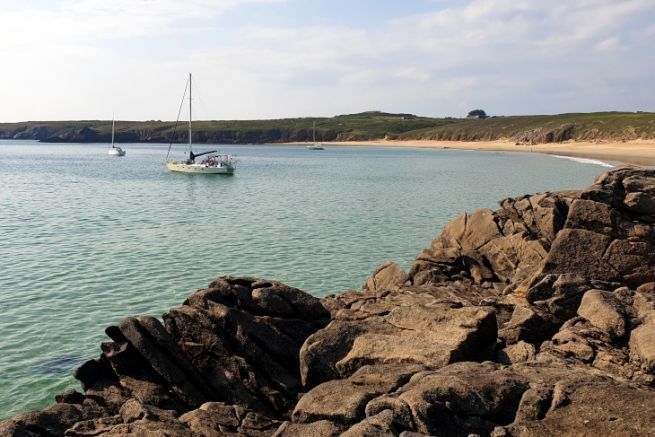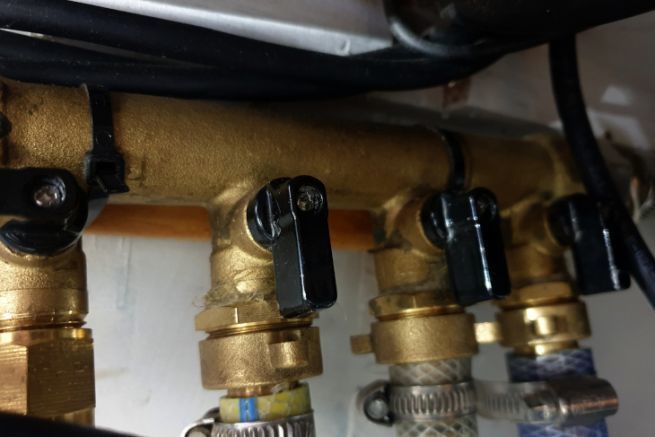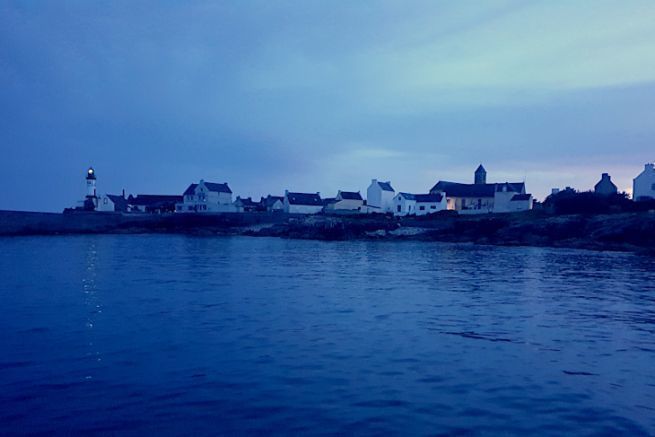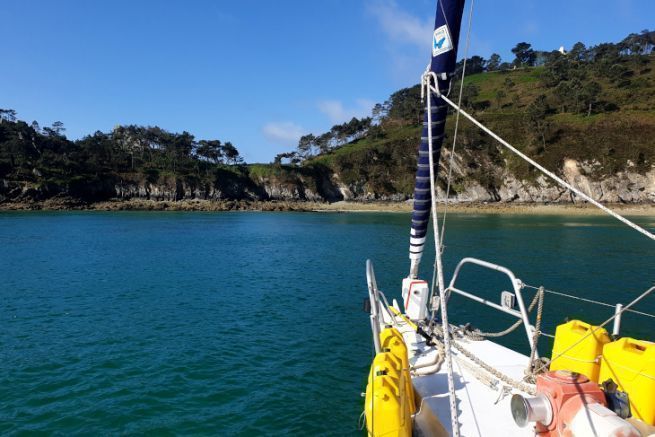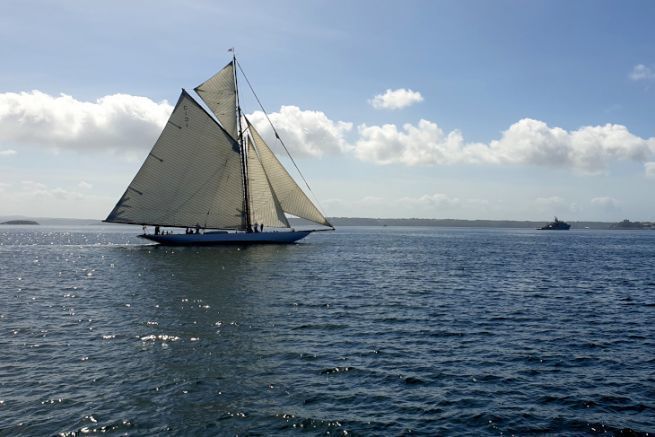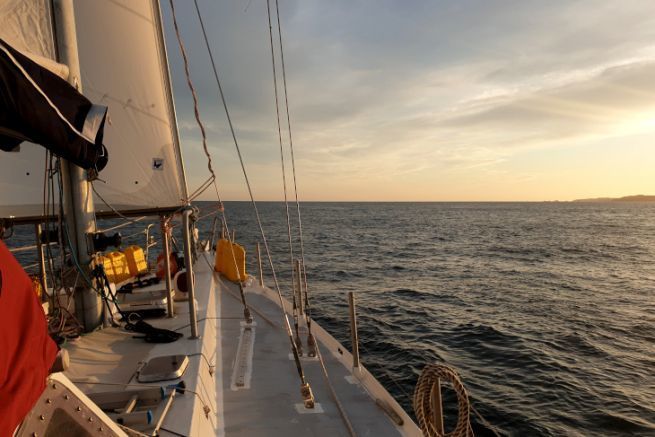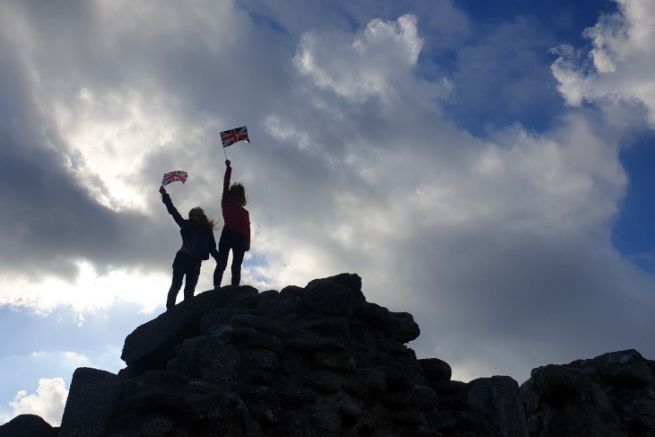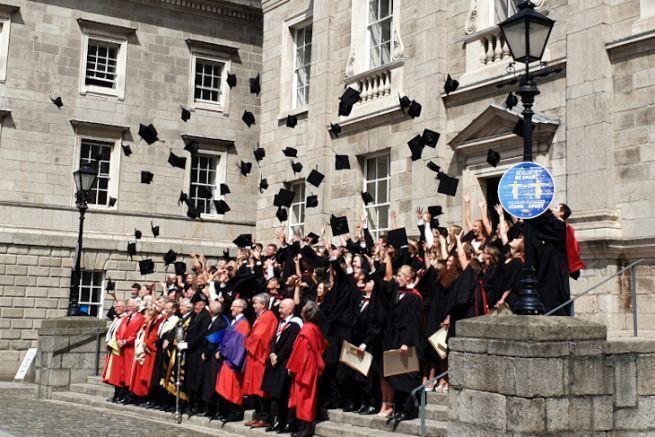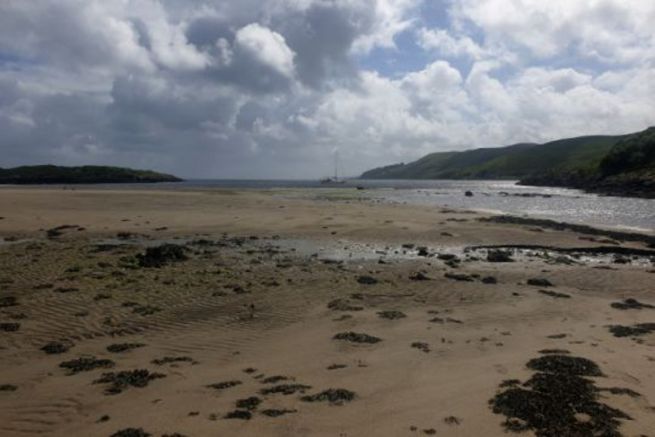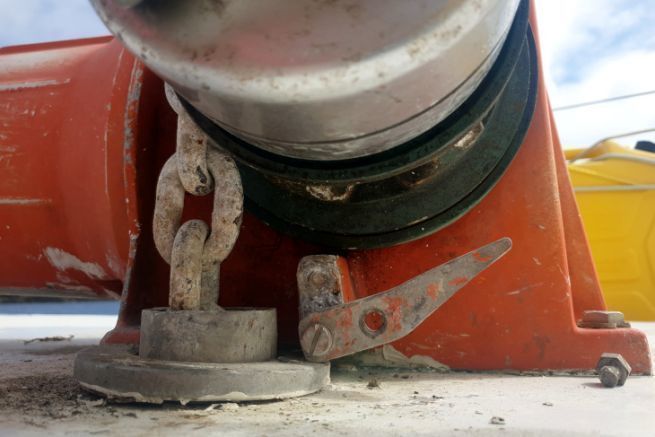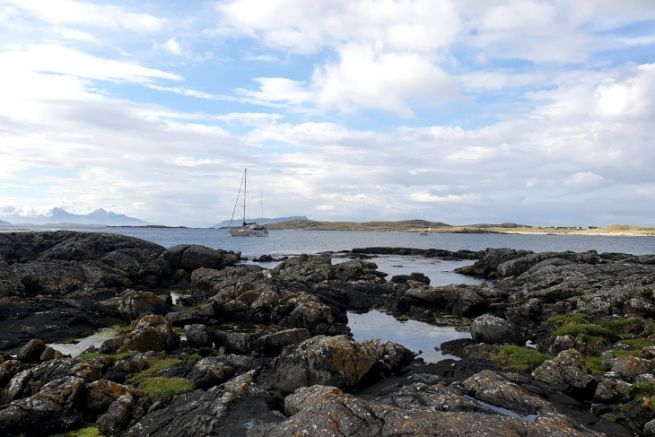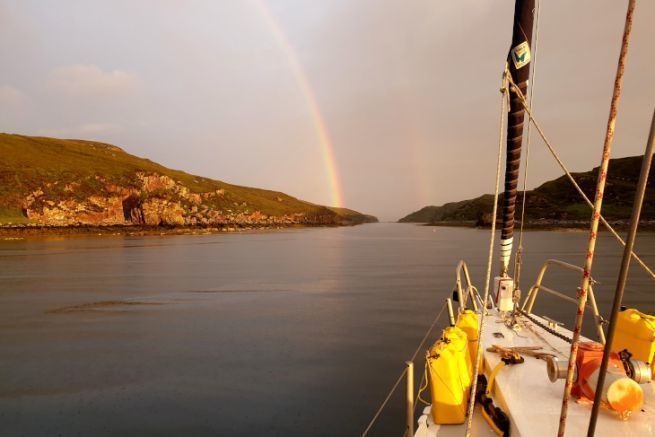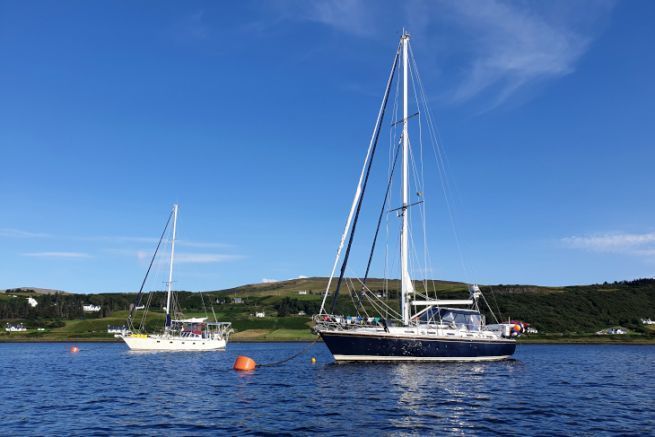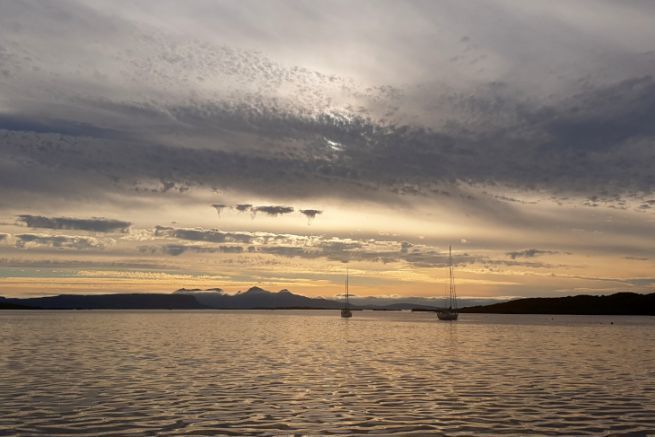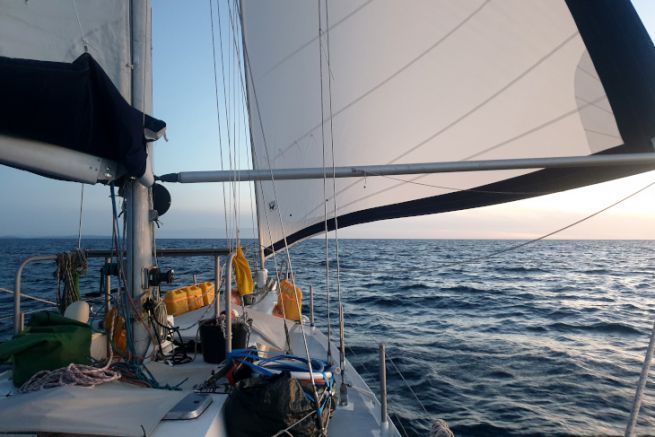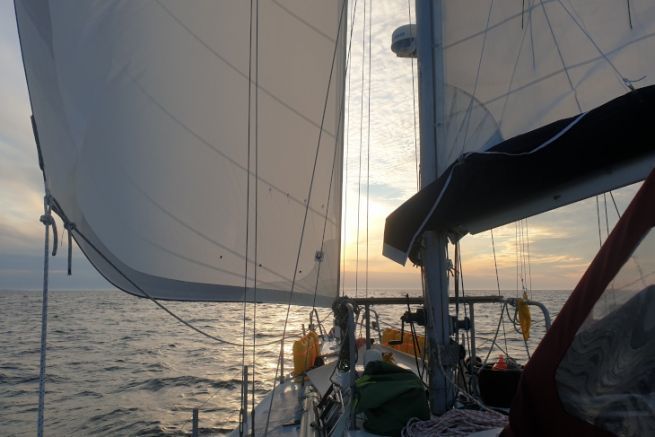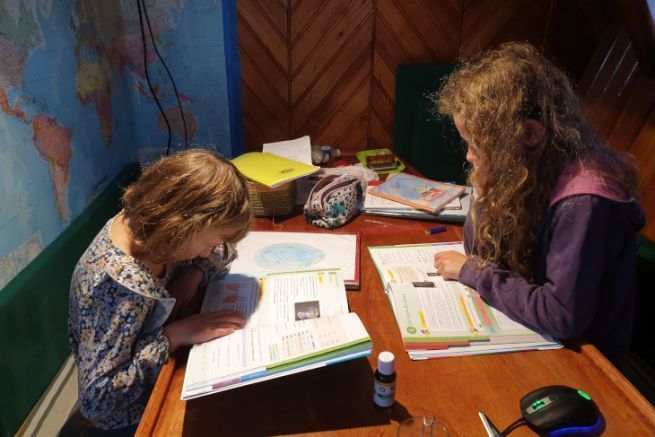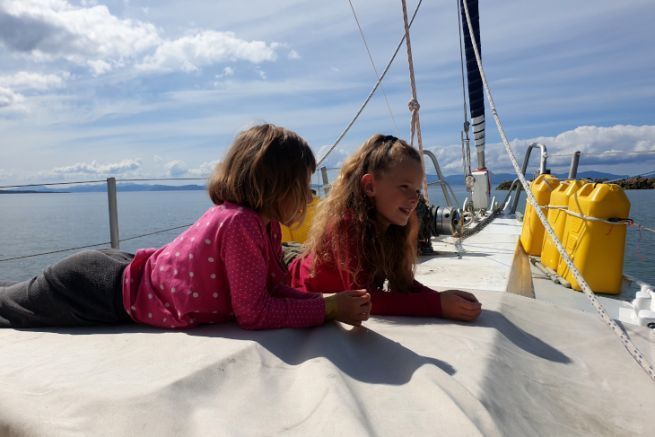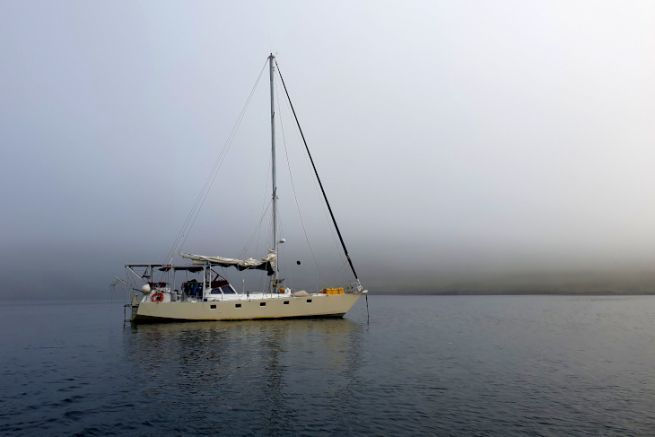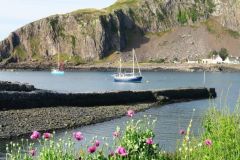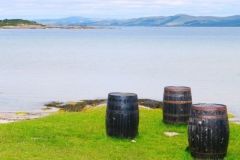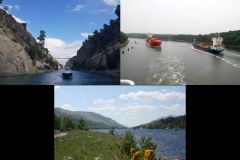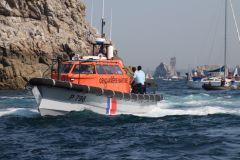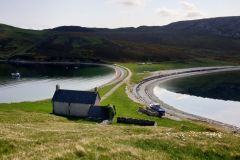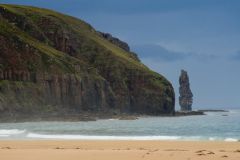We are at anchor in Sanna Bay, Scotland. We planned to leave in the afternoon, to take shelter from a gale. However, as the wind is picking up faster than expected, we decide to leave earlier.
Unfavorable conditions
The wind is already around 20 knots and the swell is starting to enter our anchorage. The rain is falling hard. We are tired and in a bad mood to have to pack up in a hurry and get soaked outside.
In addition, we anchored two anchors: the main anchor in the bow as close to the beach as possible and a light anchor in the stern to prevent the boat from getting too close to a rocky barrier on the port side, depending on the direction of the wind as it swings.
The rear anchor is made with a Fortress anchor, a bit of 10 mm chain and a 100-meter floating rope of which only a part is released. The rest is placed at the back of the boat in a bag. Because of the swell, the wind, the rain and our eagerness to leave, we decided to raise this anchor after the main anchor, from the boat, and not by dinghy as we usually do.
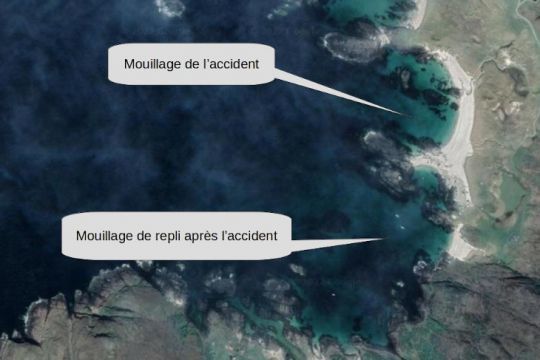
A series of events that lead to the accident
I am at the helm while Guillaume is at the front to pull up the main anchor. We give some slack to the end of the secondary anchor to move towards the beach. The wind blows and I have difficulties to keep the boat facing the beach. As the main anchor unhooked, the boat veered to port towards the rocks and I was forced to reverse.
Unfortunately, the floating end of the secondary anchor got caught in our rudder. Without being completely tangled, it hinders the maneuver. Guillaume comes aft and quickly manages to get some rope by piling it on the gangplank. The boat turns and we head towards the secondary anchor to recover it.
However, at one point in the maneuver, the sailboat passes the secondary anchor. Guillaume does not realize that his foot is in the end. In a few moments, the 18 tons of the boat goes in one direction while the anchor holds us in the other with Guillaume's ankle between the twoâeuros¦
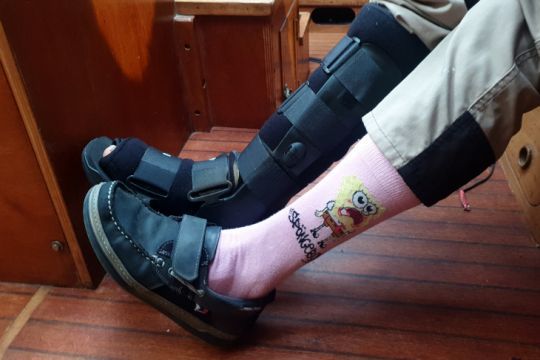
First step after the accident: get to safety
The pain is unbearable, Guillaume screams. By the time I understand what is happening and I vigorously activate the reverse gear, the damage is done. We manage to free Guillaume's foot, but we are in a very small bay surrounded by rocks. The wind and the swell are strong. It is raining, the visibility is poor and the captain is out of shape.
We abandon the aft anchorage by jettisoning the floating end and letting go. The children are vigorously invited to remain cloistered in the forward cabin. The three of them remained very quiet in the forward cabin for the duration of the rescue operation.
Then, we head for a cove in the immediate vicinity, which is better protected from the swell. Fortunately, Guillaume had studied it before and knew the dangers. He briefly shows me where to go and drags himself to the front to drop the anchor, while I position the boat.
That done, we are in relative safety. However, we do not know the extent of the damage to William's foot. He is suffering terribly. The bruises look quite terrifying and the pain is very strong.
Second step after the accident: call 16
It was decided, I called the 16th on the VHF for a pan. After a few exchanges with the coast guards about the situation of the boat, the state of Guillaume and the composition of the crew, they tell me that they are sending the speedboat from Tobermory, the nearest port.
The wait seems long, even if it is only 30 to 45 minutes. Guillaume endures as best he can, but the medication on board can do nothing for this level of pain. I installed fenders and mooring lines on both sides of the boat, not having understood what exactly the rescuers were asking me on the radio. The exchanges in English on the VHF are not very easy, but sufficient for the most part.
Third step: taking care of Guillaume
The huge speedboat finally arrived with its full crew. They immediately take care of Guillaume's pain. We discuss the circumstances of the accident. They quickly decide to evacuate Guillaume to the hospital in Fort William by helicopter for X-rays.
Having understood that I am not able to sail alone with the sailboat and the children, especially in this weather, they decide to help me to repatriate Arthur to Tobermory in the same time. After having taken Guillaume to the open sea for the hoist, two rescuers embarked on the sailboat to take him to the harbor by motor.
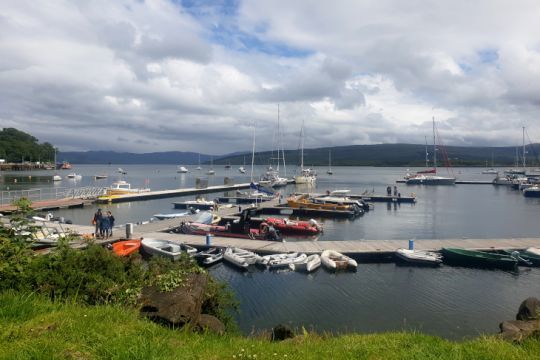
Fourth step: bringing the boat back to port
Thus, Arthur made a very noticeable entrance in Tobermory, escorted by the RNLI launch, with lifeguards in great equipment on board and a good dozen others waiting on the pontoon to catch the hawsers. We even had a boat moved to give us the best place on the dock!
Everyone is extremely attentive, friendly and compassionate. Many offers of help are made to me by the rescuers and crews of the Tobermory boats, including several French ones.
Fifth step: the aftermath of the accident
Fortunately, the news from Guillaume is reassuring! The foot is not broken. He will come back on board the next day with a huge splint, bandages, crutches, painkillers and a prescription for three weeks of rest.
Nevertheless, the experience raises a number of questions. In particular, the fact that as a crew member, I am not able to manage the boat alone if Guillaume has a serious problem.
For the first few days, the relief that the accident ended better than we thought dominates our thoughts. Then the anxiety of what might have been is felt. We need to learn from this accident and review our safety procedures.
On the other hand, our trip to the far north is compromised for this year. The season is well advanced and the convalescence of the captain will take some time. The time has come to think about the continuation of our program.
